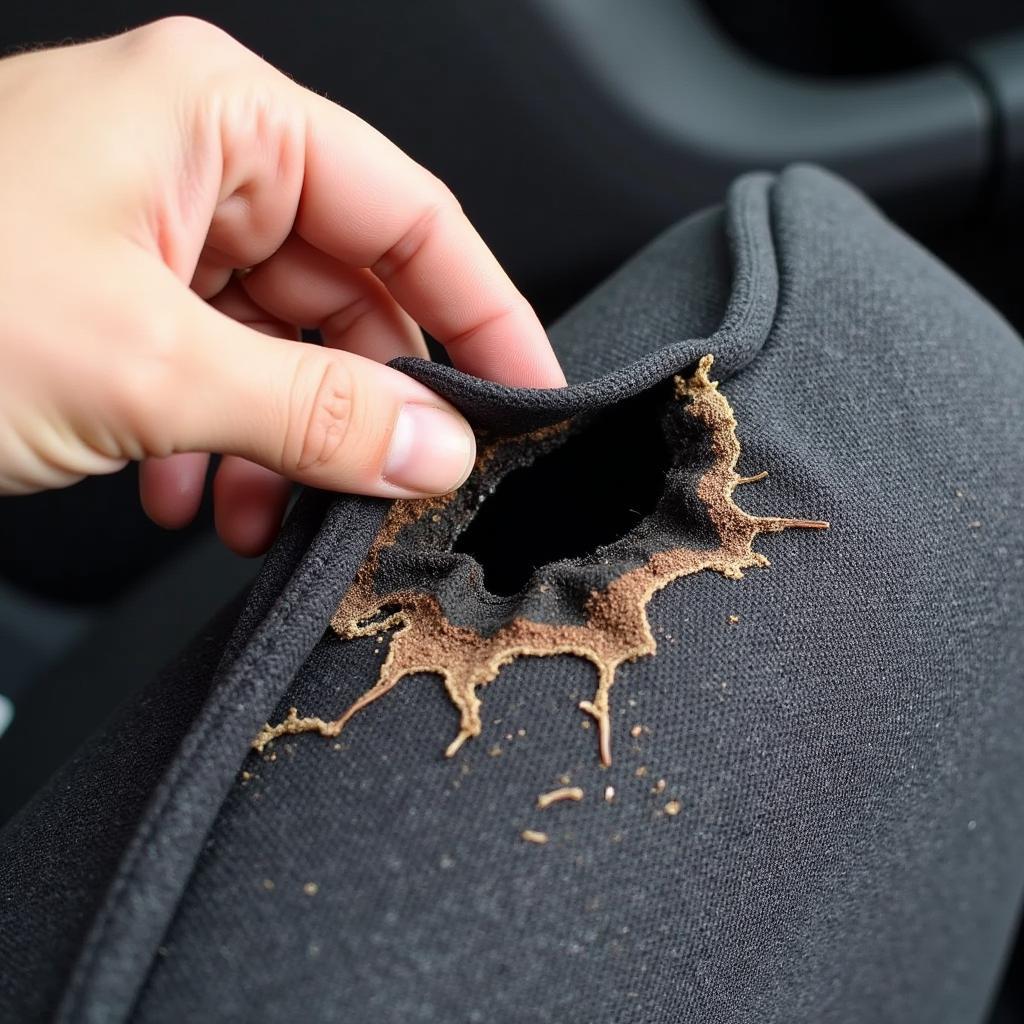
Diagnosing Car Heated Seat Problems
Heated seats can be a godsend on chilly mornings, but what happens when they malfunction? This comprehensive guide delves into the intricacies of Car Heated Seat Repair, providing you with the knowledge to diagnose issues and explore repair options.
Understanding Your Car’s Heated Seat System
Before diving into troubleshooting, it’s crucial to grasp the basics of how your heated seats function. Most systems consist of:
- Heating elements: These are wires embedded within the seat’s upholstery that generate heat when electricity flows through them.
- Temperature sensors: These sensors monitor the seat’s temperature and send signals to the control module to regulate heat output.
- Control module: This electronic unit receives input from the temperature sensors and user controls to adjust the heating elements’ activity.
- Switches or buttons: Located on the dashboard or center console, these allow you to turn the heated seats on/off and adjust temperature levels.
- Wiring harnesses: These connect the various components of the system, ensuring proper electrical flow.
Common Car Heated Seat Problems
Heated seat malfunctions can manifest in various ways. Here are some common issues:
- Seat not heating at all: This could point to a blown fuse, faulty wiring harness, a malfunctioning control module, or a broken heating element.
- Seat heating unevenly: This often indicates a problem with the heating element itself, possibly due to a break or damage in the wiring.
- Seat getting too hot: A faulty temperature sensor or a problem with the control module could be the culprit.
- Heated seat buttons not working: This may suggest a problem with the switch itself, a blown fuse related to the switch, or a wiring issue.
Diagnosing the Problem
Identifying the root cause of a heated seat issue often requires some troubleshooting. Here are some steps you can take:
- Check the fuse: Refer to your car’s owner’s manual to locate the fuse box and identify the fuse associated with the heated seats. A blown fuse will need replacement.
- Inspect the wiring: Visually examine the wiring harness for any signs of damage, such as cuts, burns, or loose connections.
- Test the switches: Use a multimeter to check for continuity in the heated seat switches. A lack of continuity indicates a faulty switch.
- Consider professional diagnostics: For complex issues, especially those involving the control module or heating elements, it’s best to consult a qualified mechanic with experience in car heated seat repair.
 Diagnosing Car Heated Seat Problems
Diagnosing Car Heated Seat Problems
“Diagnosing heated seat problems accurately often requires specialized tools and knowledge,” says John Smith, Senior Automotive Technician at XYZ Auto Repair. “Attempting complex repairs yourself can sometimes do more harm than good.”
Car Heated Seat Repair Options
Depending on the diagnosed issue, several repair options exist:
- Fuse replacement: A simple and inexpensive fix for a blown fuse.
- Wiring repair or replacement: Damaged or faulty wiring harnesses may need to be repaired or replaced entirely.
- Switch replacement: Faulty switches can be easily replaced with new ones.
- Heating element repair or replacement: Depending on the severity and location of the damage, heating elements can sometimes be repaired. However, replacement is often the more reliable solution.
- Control module replacement: Malfunctioning control modules typically require replacement.
Cost of Car Heated Seat Repair
The cost of car heated seat repair can vary significantly based on the problem, your car’s make and model, and labor rates in your area.
Here’s a general idea of potential costs:
- Fuse replacement: $20 – $50
- Switch replacement: $50 – $200
- Wiring repair: $100 – $500
- Heating element replacement: $200 – $1000+
- Control module replacement: $300 – $800+
Keep in mind that these are estimates. Always get a quote from a reputable repair shop before proceeding with any work.
“While it’s tempting to go for the cheapest option, investing in quality parts and experienced technicians can save you headaches in the long run,” advises Smith.
DIY vs. Professional Repair
Simple repairs like fuse or switch replacements can often be tackled by DIY enthusiasts with basic automotive knowledge. However, more complex issues involving wiring, heating elements, or control modules are best left to professionals.
Attempting these repairs without proper knowledge and tools can lead to further damage and higher repair costs down the line.
Preventing Future Problems
You can take several proactive steps to prevent future heated seat issues:
- Avoid placing heavy objects on the seats: This can damage the heating elements.
- Clean spills immediately: Liquids can seep into the seat’s electrical components and cause damage.
- Have your heated seats inspected periodically: During routine maintenance, ask your mechanic to check the condition of your heated seat system.
Conclusion
Car heated seat repair, while sometimes complex, is essential for maintaining comfort and functionality during colder months. Understanding the system, common problems, and repair options empowers you to address issues effectively. Remember, for anything beyond basic repairs, seeking professional help is crucial to ensure a safe and long-lasting fix.
FAQ
-
Q: Can I drive with a blown heated seat fuse?
- A: Yes, you can still drive your car, but the heated seat functionality will be disabled.
-
Q: How long do car heated seats last?
- A: With proper care, heated seats can last for many years, often exceeding the lifespan of the vehicle itself.
-
Q: Can I repair a torn heated car seat myself?
- A: While minor tears in the upholstery can be addressed with DIY repair kits, it’s crucial to avoid damaging the heating elements underneath. For significant tears or if you’re unsure, professional repair is recommended.
-
Q: Are aftermarket heated seats a good option?
- A: Aftermarket heated seats can be a cost-effective alternative if your car didn’t come equipped with them. However, it’s crucial to choose reputable brands and professional installation to ensure safety and proper functionality.
-
Q: My heated seat turns off automatically. What does this mean?
- A: This is usually a safety feature designed to prevent overheating. It could also indicate a problem with the temperature sensor or control module.
For more in-depth information on specific heated seat repair topics, check out our articles on car heated seat repair near me, how to repair a leather car seat with heated seats, and burnt car seat repair.
Don’t let a faulty heated seat leave you out in the cold. If you’re experiencing issues, contact us today for expert diagnosis and repair. You can reach our team via WhatsApp at +1(641)206-8880 or email us at [email protected]. We’re available 24/7 to assist you.

